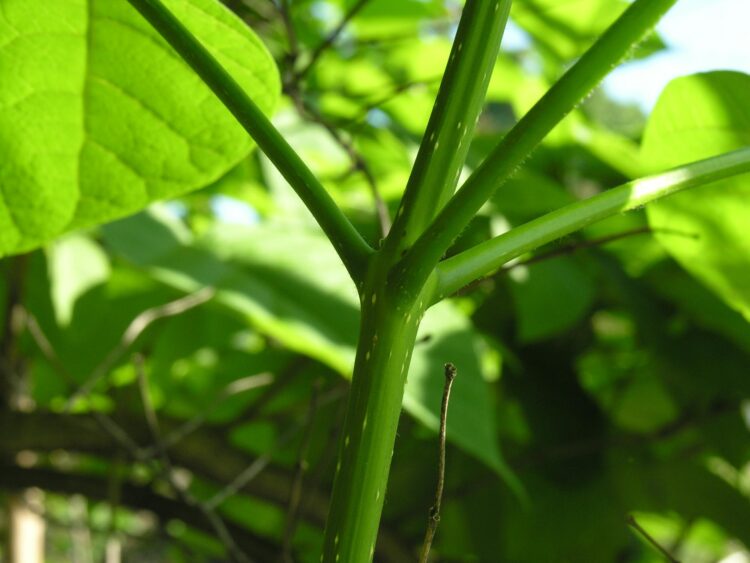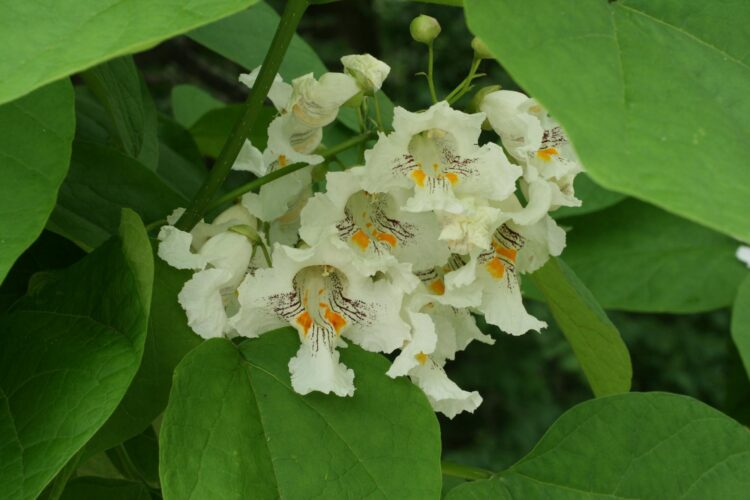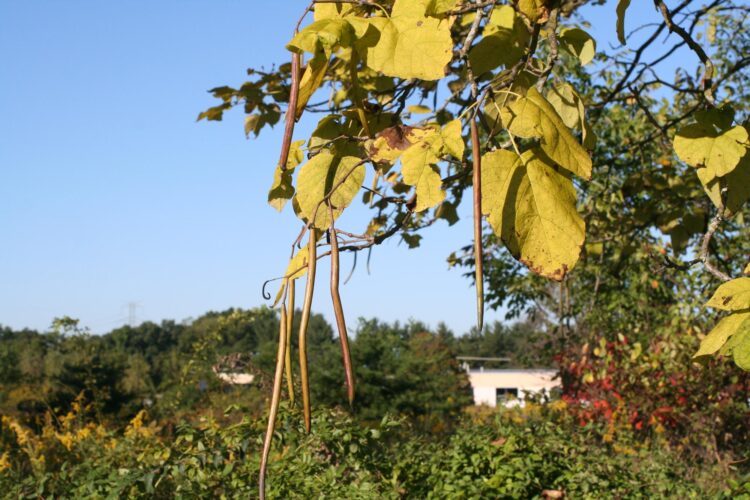catalpa species (Catalpa speciosa and C. bignonioides)
Bignoniacea, the bignonia family
How to recognize catalpa. These two very similar trees, both native to the southeastern U.S, and present in Ohio only as cultivated plants and escapes frlom cultivation, are easily recognized by their very large, simple, ovate, entire-margined leaves that have a (drumroll, please) WHORLED leaf arrangement!

Catalpa has large leaves that are arranged in whorls around the branches.
The whorled leaf arrangement isn’t obvious in the long-range view above, Here’s a closeup.

Catalpa flowers are also large, arranged in much-branched clusters. They have fused petals that are brown-spotted within. Bu changing color they signal to pollinators that they either haven’t been pollinayed yet (mostly yellow) or already have been (purplish brown).

Catalpa flowers.
Catalpa fruits are long narrow capsules (another common name is “cigar-tree”) that splits open to release winged wind-[dispersed seeds.

Catalpa fruits are liong narrow capsules.
In the winter. The positions of the leaf scars revels the leaf arrangement –whorled –and they are neatly circular. The buds are small, perched above the leaf scars.

Catalpa had circular leaf scars, with a circular pattern of bundle scars within.
Where to find catalpa. E. Lucy Braun, in The Woody Plants of Ohio (1961, 1989; The Ohio State University Press) tells us that Catalpa speciosa is “Widely planted for fence-posts and as an ornamental, and frequently escaped. .”
